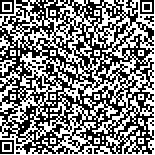| 引用本文: | 吕孝清,高学鲁,赵建民,刘永亮,王斌,杨波,谢磊,张乃星.养马岛附近海域藻华期间有色溶解有机质的生物可利用性研究[J].海洋科学,2023,47(6):30-41. |
| |
|
| |
|
|
| 本文已被:浏览 376次 下载 620次 |

码上扫一扫! |
|
|
| 养马岛附近海域藻华期间有色溶解有机质的生物可利用性研究 |
|
吕孝清1,2, 高学鲁1,2, 赵建民1, 刘永亮1,2, 王斌1,2, 杨波3, 谢磊1,2, 张乃星4
|
|
1.中国科学院烟台海岸带研究所, 山东 烟台 264003;2.中国科学院大学, 北京 100049;3.广东海洋大学 深圳研究院, 广东 深圳 518114;4.国家海洋局北海预报中心, 山东 青岛 266061
|
|
| 摘要: |
| 本研究利用吸收光谱和荧光激发-发射矩阵光谱-平行因子分析(EEMs-PARAFAC),研究了养马岛附近海域海水中有色溶解有机质(CDOM)的浓度、组成、来源和生物可利用性,并估算了浮游植物生长繁殖对CDOM及具有生物可利用性CDOM的贡献。结果表明,表、底层海水中CDOM浓度(以吸收系数a350计)平均值分别为1.62±0.42 m-1和1.30±0.47 m-1,光谱斜率(S275-295)平均值分别为0.022±0.003 nm-1和0.023±0.003 nm-1。利用PARAFAC模型识别出4种荧光组分,分别为陆源类腐殖酸C1、类色氨酸C2、类酪氨酸C3和微生物源类腐殖酸C4。荧光指数(FIX)、腐殖化指数(HIX)和生物指数(BIX)显示,CDOM受陆源输入和海洋自生源的综合影响。降解实验结果显示,表、底层海水中生物可利用性CDOM百分比(%△a350)平均值分别为(23.36%±17.94%)和(8.93%±20.30%)。C1、C2和C4组分的荧光强度在培养之后降低,而C3组分的荧光强度上升。各荧光组分生物可利用性依次递减的顺序为:%△C1(23.75%±8.96%)>%△C4(20.83%±11.71%)>%△C2(11.67%±38.87%)>%△C3(-29.61%±39.90%),显示培养之后CDOM的平均分子量和腐殖化程度降低。表层海水中a350、%△a350与Chl a之间存在显著线性相关关系,据此可以估算出浮游植物生长繁殖对CDOM的贡献为36.9%,对具有生物可利用性CDOM的贡献为85.0%。 |
| 关键词: 吸收光谱 EEMs-PARAFAC 有色溶解有机质(CDOM) 生物可利用性 浮游植物 |
| DOI:10.11759/hykx20230208003 |
| 分类号:X145 |
| 基金项目:中国科学院战略性先导科技专项(XDA23050303) |
|
| Bioavailability of chromophoric dissolved organic matter in the coastal waters adjacent to Yangma Island during an algal bloom |
|
LV Xiao-qing1,2, GAO Xue-lu1,2, ZHAO Jian-min1, LIU Yong-liang1,2, WANG Bin1,2, YANG Bo3, XIE Lei1,2, ZHANG Nai-xing4
|
|
1.Yantai Institute of Coastal Zone Research, Chinese Academy of Sciences, Yantai 264003, China;2.University of Chinese Academy of Sciences, Beijing 100049, China;3.Shenzhen Institute of Guangdong Ocean University, Shenzhen 518114, China;4.North China Sea Marine Forecasting Center of State Oceanic Administration, Qingdao 266061, China
|
| Abstract: |
| The concentrations, composition, and sources of chromophoric dissolved organic matter (CDOM) in the coastal waters adjacent to Yangma Island were studied by measuring the absorption spectra and fluorescence excitation-emission matrix-parallel factor analysis (EEM-PARAFAC), and the contribution of phytoplankton growth and reproduction on CDOM and its bioavailability were estimated. The results revealed that the average concentrations of CDOM reflected by a350 in the surface and bottom seawater were 1.62±0.42 m-1 and 1.30±0.47 m-1, and the spectral slopes S275-295 were 0.022±0.003 nm-1 and 0.023±0.003 nm-1, respectively. Four fluorescence components were identified by the PARAFAC model, namely, terrestrial humic-like C1, tryptophan-like C2, tyrosine-like C3, and microbial humic-like C4. The fluorescence, humification, and biological indexes indicated that CDOM was influenced by terrestrial input and marine autochthonous sources. Degradation incubation experiments indicated that the percentages of bioavailability CDOM (%△a350) were (23.36%±17.94%) and (8.93%±20.30%) in the surface and bottom seawater, respectively. The fluorescence intensities of C1, C2, and C4 decreased while that of C3 increased. The bioavailability of fluorescent components decreased in the following order: %△C1(23.75%±8.96%)> %△C4(20.83%±11.71%)>%△C2(11.67%±38.87%)>%△C3(-29.61%±39.90%), which indicates that the mean molecular weight and humification degree of CDOM decreased after microbial degradation. a350 and %△a350 had significant linear correlations with Chl a, based on which phytoplankton growth and reproduction were estimated to contribute 36.9% and 85.0% to CDOM and bioavailable CDOM, respectively. |
| Key words: absorption spectrum EEMs-PARAFAC chromophoric dissolved organic matter (CDOM) bioavailability phytoplankton |
|
|
|
|
|
|
